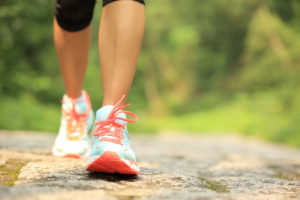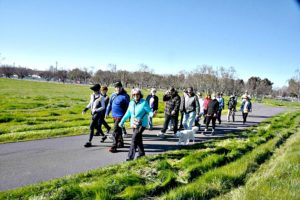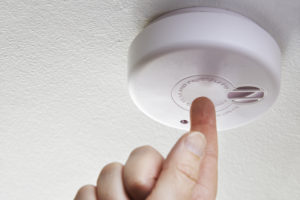Is caffine really bad for you?
March 26, 2018 –
ASK MR. PEDOMETER & FRIENDS
Q: Mr. Pedometer, is drinking coffee bad for one’s health? I have heard conflicting reports.
A: It can be difficult to sort out what is “fake news,” even about health. Consumer Report on Health went through five commonly stated ‘facts” about drinking coffee and reported which were true and which were myths. Here is an excerpt:
- COFFEE IS BAD FOR YOUR HEART = FALSE! Healthy people who drink 3-5 cups of coffee per day had a 15 percent decreased risk of cardiovascular disease compared with those who drank no coffee, according to a study published recently in the Journal of Agricultural and Food Chemistry. However, government dietary guidelines recommend that most adults should limit caffeine to 2-4 eight-ounce cups of coffee per day.
- COFFEE BOOSTS YOUR BRAIN = TRUE! Caffeine can increase alertness and concentration – possibly even boosting cognitive performance. More recent research has found that “regular coffee drinkers seem to have a lower risk of type 2 diabetes, Parkinson’s, and Alzheimer’s, conditions that may affect the sharpness of your brain.”
- COFFEE HELPS YOU LOSE WEIGHT = FALSE! “While some studies suggest that coffee drinking may reduce your appetite, none have proved it can help you shed pounds.” Those who drink their coffee black consume no calories, but adding a teaspoon of sugar adds 16 calories, and a 1-ounce splash of cream can add 60 more – possibly leading to weight gain rather than a loss.
- ESPRESSO HAS MORE CAFFEINE THAN REGULAR COFFEE = TRUE! An ounce of espresso contains 2-5 times as much caffeine as a regular cup of coffee…but you can get more caffeine from a regular cup of coffee since you likely drink more than on ounce or two. (If an espresso feels like a greater jolt, it may be because you drink it down more quickly.)
- DECAF ISN’T GOOD FOR YOU = FALSE! Times have changed: The harsh, carcinoginous chemicals that used to be used to strip caffeine from coffee beans have been replaced with milder chemicals that the Food and Drug Administration says are in amounts too minuscule to affect health. Decaf coffee may have some of the same benefits as regular coffee: “A large study published in the Annals of Internal Medicine in 2017 showed that people who had just one to three cups of coffee a day – regular or decaf – had a 12-18 percent lower risk of dying from any cause during the 16-year study period.”
So that’s good news for those of us who start (and continue?) each day with a cup of hot coffee.
EAT RIGHT,
MOVE MORE,
AND SLEEP WELL,
FOR A HEALTHY, LONGER LIFE!

 an extra 80 calories per day and 29,200 extra calories per year, resulting in a losing eight pounds in one year — just from one small lifestyle change.
an extra 80 calories per day and 29,200 extra calories per year, resulting in a losing eight pounds in one year — just from one small lifestyle change.
